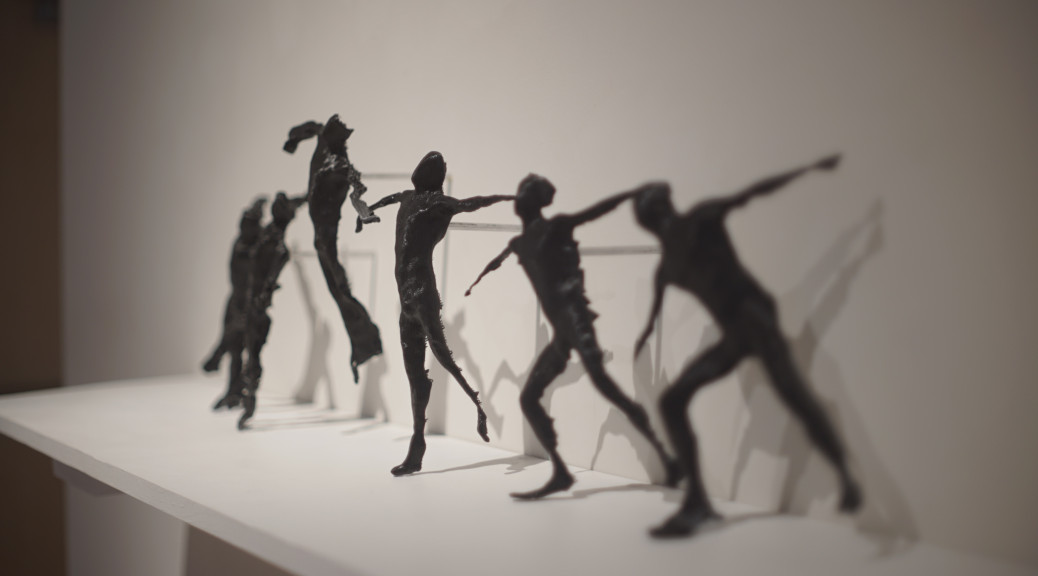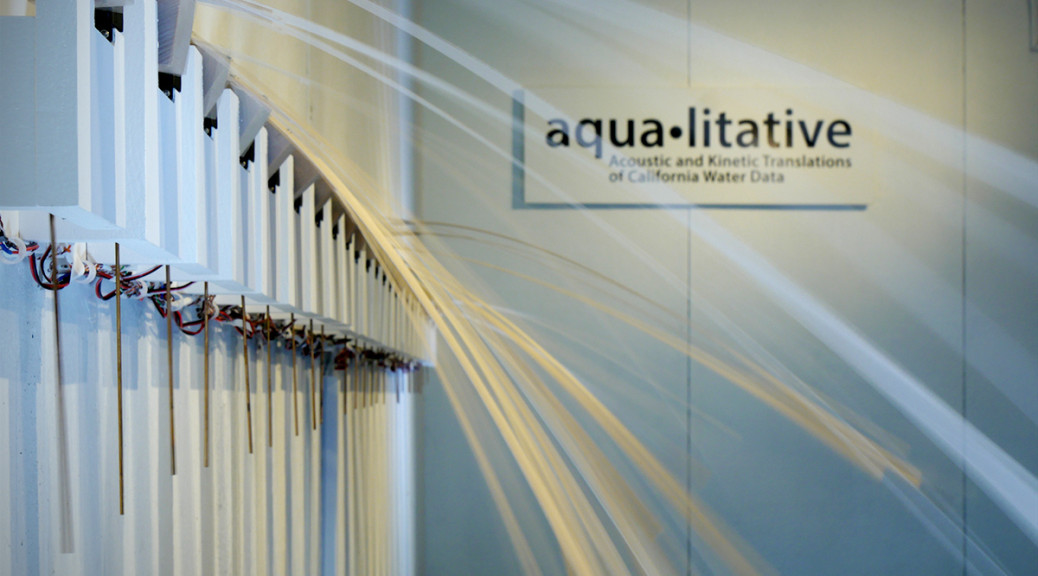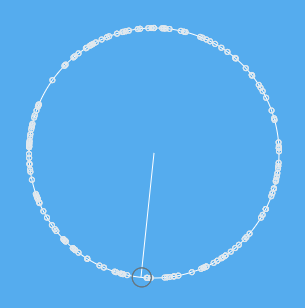Precipitation 3 is one of a series of musical compositions written for 26 clock chimes as part of the sound art installation, Aqua•litative. With my Precipitation series, I treat the electromechanical structure as musical instrument, navigating through sound with the syntactical construction of code. Compositions played by the sculpture evoke precipitation data of California weather stations by cycling through bits of its data. These cycles create emergent sonic patterns in a continuously evolving play between density and rhythm. Movement flows as collapsing waves, additively striking a cybernetic balance between natural order and mechanic motion.
Aqua•litative is a kinetic installation that renders multiple data sets of California’s water history into a physical experience. The work correlates natural factors contributing to California’s water shortages, outlining the serpentine narrative of water through the translation of data into kinetic movement and acoustic sound.



